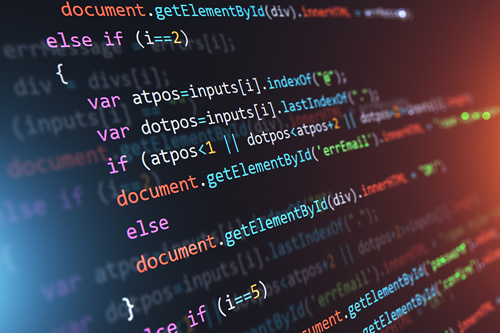python 对象转json

Python 对象转 JSON

Python 是一种高级编程语言,它提供了许多强大的功能和工具,使开发人员能够轻松地处理和操作数据。其中一个常见的任务是将 Python 对象转换为 JSON 格式。JSON(JavaScript Object Notation)是一种轻量级的数据交换格式,广泛用于前后端之间的数据传输。
**什么是 JSON?**
JSON 是一种用于存储和交换数据的格式,它使用简单的文本表示复杂的数据结构。它由键值对组成,其中键是字符串,值可以是字符串、数字、布尔值、数组、对象或 null。JSON 的结构类似于 Python 中的字典和列表,因此 Python 对象可以很容易地转换为 JSON。
**为什么要将 Python 对象转为 JSON?**
将 Python 对象转换为 JSON 的主要原因是为了与其他系统进行数据交换。很多时候,我们需要将数据从 Python 发送到其他编程语言的应用程序或服务中,而这些应用程序通常使用 JSON 作为数据格式。将 Python 对象转换为 JSON 还可以方便地存储数据,以便将来使用。
**如何将 Python 对象转为 JSON?**
在 Python 中,我们可以使用内置的 json 模块来实现 Python 对象到 JSON 的转换。这个模块提供了 json.dumps() 函数,它接受 Python 对象作为参数,并返回对应的 JSON 字符串。
下面是一个示例,展示了如何将 Python 字典对象转换为 JSON 字符串:
`python
import json
person = {
"name": "Alice",
"age": 30,
"city": "New York"
json_str = json.dumps(person)
print(json_str)
输出结果为:
`json
{"name": "Alice", "age": 30, "city": "New York"}
**如何处理复杂的 Python 对象?**
当处理复杂的 Python 对象时,我们需要注意一些细节。例如,如果 Python 对象包含日期、时间或自定义类的实例等特殊类型的数据,我们需要为 json.dumps() 函数提供一个自定义的编码器。
下面是一个示例,展示了如何处理包含日期的 Python 对象:
`python
import json
from datetime import datetime
class Person:
def __init__(self, name, birthdate):
self.name = name
self.birthdate = birthdate
person = Person("Alice", datetime(1990, 1, 1))
def encode_person(obj):
if isinstance(obj, Person):
return {"name": obj.name, "birthdate": obj.birthdate.strftime("%Y-%m-%d")}
return obj
json_str = json.dumps(person, default=encode_person)
print(json_str)
输出结果为:
`json
{"name": "Alice", "birthdate": "1990-01-01"}
**常见问题解答**
1. **如何将 JSON 转换为 Python 对象?**
在 Python 中,我们可以使用 json.loads() 函数将 JSON 字符串转换为 Python 对象。这个函数接受一个 JSON 字符串作为参数,并返回对应的 Python 对象。
2. **如何将 Python 对象转换为 JSON 文件?**
我们可以使用 json.dump() 函数将 Python 对象转换为 JSON 并写入文件。这个函数接受一个 Python 对象和一个文件对象作为参数,并将 JSON 写入文件中。
`python
import json
person = {
"name": "Alice",
"age": 30,
"city": "New York"
}
with open("person.json", "w") as file:
json.dump(person, file)
`
这将创建一个名为 person.json 的文件,并将 JSON 写入其中。
3. **如何处理 JSON 中的特殊字符?**
当 JSON 中包含特殊字符时,例如换行符或制表符,json.dumps() 函数会自动转义这些字符。转义后的 JSON 字符串可以安全地传输和存储。
`python
import json
text = "This is a text with\na newline character."
json_str = json.dumps(text)
print(json_str)
`
输出结果为:
`
"This is a text with\na newline character."
`
在这个例子中,换行符被转义为 \n。
4. **如何处理循环引用的 Python 对象?**
当 Python 对象之间存在循环引用时,即对象 A 引用对象 B,而对象 B 又引用对象 A,json.dumps() 函数会抛出 TypeError: Circular reference detected 异常。为了解决这个问题,我们可以使用 json.JSONEncoder 的子类,并重写 default() 方法来处理循环引用。
`python
import json
class Person:
def __init__(self, name):
self.name = name
self.friends = []
alice = Person("Alice")
bob = Person("Bob")
alice.friends.append(bob)
bob.friends.append(alice)
class PersonEncoder(json.JSONEncoder):
def default(self, obj):
if isinstance(obj, Person):
return obj.name
return super().default(obj)
json_str = json.dumps(alice, cls=PersonEncoder)
print(json_str)
`
输出结果为:
`
{"name": "Alice", "friends": ["Bob"]}
`
在这个例子中,我们重写了 PersonEncoder 类的 default() 方法,将 Person 对象转换为其名称字符串。
通过以上问答和示例代码,我们了解了如何使用 Python 将对象转换为 JSON。这个功能在实际开发中非常有用,特别是在与其他系统进行数据交换时。无论是简单的字典还是复杂的自定义对象,Python 的 json 模块都能够提供灵活而强大的功能,帮助我们轻松地处理和转换数据。







